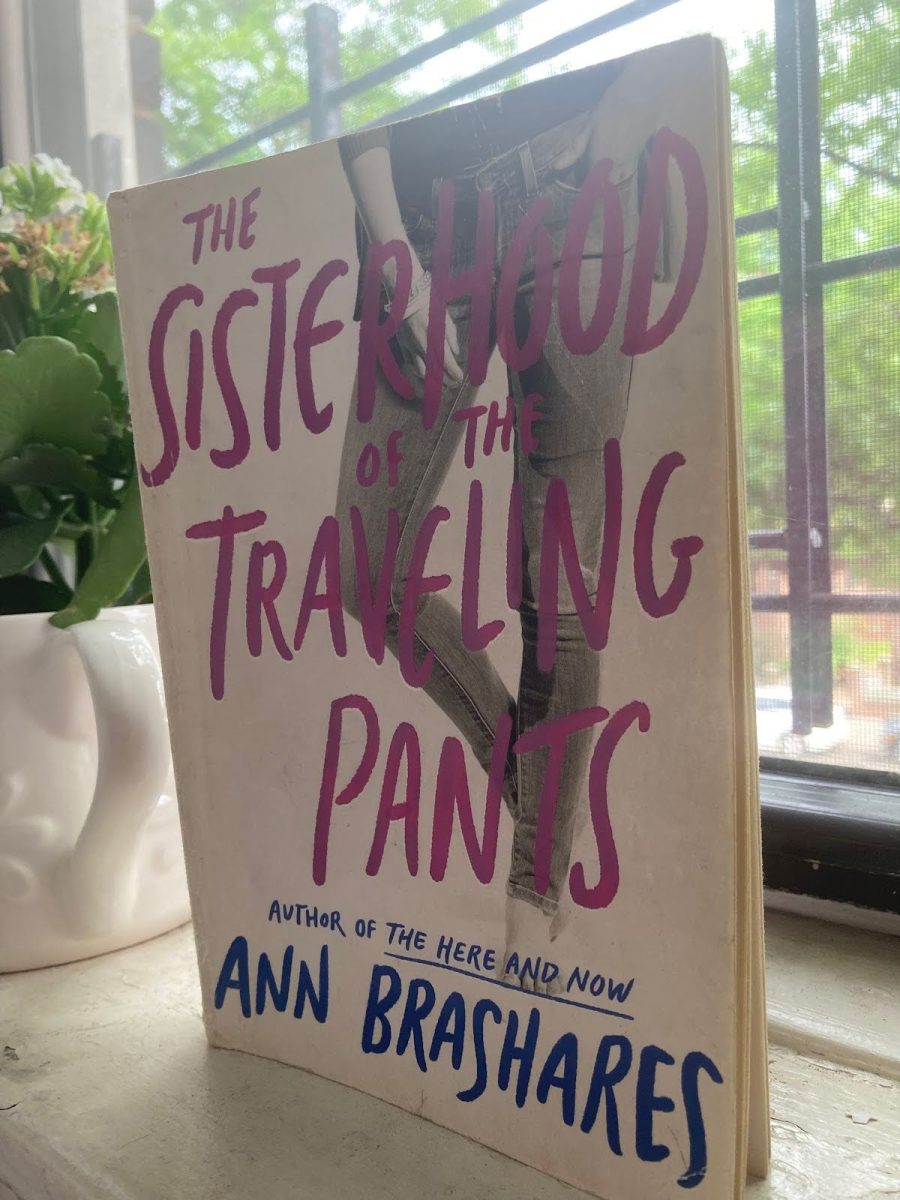It was June of 2020, and I was bored out of my mind.
School had ended, and COVID-19 was raging throughout the city. Things had changed so drastically that it was hard to imagine anything returning to normal. Everyone tried their best to maintain some semblance of normalcy; teachers held classes over Zoom and Google Meets, and friends kept in touch through texts and calls. But there was no denying that things had changed, and people were lonelier than ever before.
I was lucky to be able to spend time with my family during the pandemic and with my friends through digital means. But like the majority of people during quarantine, I still felt isolated from the world around me. I wasn’t sure what to do with myself other than endlessly scroll through YouTube, watching old videos, and listening to music. I’ve been an avid reader all my life, but I didn’t see the appeal in reading anymore — and I felt stifled by the books I had that I’d already read. If I was going to read a book, I wanted to read something new, something that I’d never read or even heard of before and would transport me into a different world.
This book came in the form of The Sisterhood of the Traveling Pants. The name was vaguely familiar to me, but I didn’t know much about it. All I knew was that it had been published a while ago and had something to do with pants.
The idea of reading a book solely about pants struck me as unappealing, but I decided to try reading it anyway. And I’m glad I did.
Background
The Sisterhood of the Traveling Pants is a series by Ann Brashares. The series consists of five books — the titular The Sisterhood of the Traveling Pants, The Second Summer of the Sisterhood, Girls in Pants, Forever in Blue, and Sisterhood Everlasting. Each book focuses on the main characters’ ever-changing relationships with their family, each other, and themselves. I will only be focusing on the first novel in this article, although I recommend reading the additional books in the series as well.
The main characters, who make up the ‘sisterhood’ referenced in the title, are Lena, Tibby, Carmen, and Bridget. They’ve been best friends since their early childhood, when their mothers were in the same aerobics class for pregnant women and all had similar due dates. Though their mothers became close friends due to their circumstances, their friendship dissolved over time, as each woman became more busy and was unable to make time for the others. When Bridget’s mother died, their friendship splintered even further and became solely about their daughters.
The premise of the first novel in the series is that it will be the first summer the friends have spent apart. Bridget, an avid soccer player, is going to a soccer camp in Baja California, Mexico; Lena is visiting her grandparents in Oia, Greece; Carmen is spending the summer with her father in South Carolina, and Tibby is staying in their hometown of Bethesda, Maryland. None of them are thrilled at the prospect of being away from each other for the entire summer.
This anxiety is tempered by the jeans that Carmen buys at a secondhand clothing store, which somehow fit each of them perfectly. The pants become a symbol of the girls’ everlasting friendship, the ‘sisterhood’ they have established that can withstand even the farthest of distances. They decide to send the pants back and forth to each other throughout the summer, and important events happen to each of them while they are wearing the pants.

The Characters
Part of what makes The Sisterhood of the Traveling Pants such a compelling series is the dynamic characters. Although the majority of the book is written from a third-person point of view, it’s easy to feel a kinship with each of the main characters and feel as though you really know them. They’re each carefully written, and their hopes and motivations feel painfully real.
Lena is the oldest of the group, something her friends think makes sense due to her personality. She’s less impulsive than the others, thinking carefully before she acts and maintaining a cold front that sometimes prevents people from getting to know her well. She’s a talented artist and cares deeply about the people in her life, but her good looks have made her guarded and reluctant to let anyone into her inner circle.
Bridget is a phenomenal athlete, already having been scouted by several collegiate teams. She is exuberant, persistent in the achievement of her goals, and considered the most extroverted of her friends. But behind her lively persona is someone grappling with intense grief. Her mother’s death after a lengthy struggle with depression has affected her and her family greatly, but Bridget tries to avoid dealing with her feelings about it by whatever means necessary.
Tibby is jaded and judgmental, someone who cares about her friends but condemns the rest of the world at the drop of a hat. She makes snap judgments and maintains them, never looking past her initial impression of someone to get to know them better. Her perception of the world changes throughout the course of the first book and even further throughout the series, contributing to her character development and making her more introspective and empathetic.
Carmen is a more complex character than the others, in some ways. She’s contemplative but impulsive, often acting out of anger or sadness and later regretting her actions. Like her best friends, she cares deeply about their friendship, though her awareness extends beyond that of her friends. She’s aware that friendships are fragile and can break easily, and assigns herself the responsibility of keeping the friends together.
Note: There are major spoilers ahead for The Sisterhood of the Traveling Pants.
The Sisterhood of the Traveling Pants
The first book in the series focuses on the friends outside of their relationships with each other. While snippets of their interactions, including letters that they write to each other throughout the summer, showcase how strong their friendship is, the first book gives each character a chance to shine.
They spend the majority of their summer apart, a choice that allows Brashares to both develop their personalities in distinct ways and showcase their development. Each of the main characters faces an issue over the summer that shapes them in some way.

Carmen’s parents are divorced, and she lives with her mother. She’s thrilled at the prospect of spending a summer with her father in South Carolina; her love for him tilts into reverence. She wants to make him proud of her and thus shares only the positive aspects of her life with him: her good grades, her close relationships with her friends, and her eagerness to spend the summer with him. She’s surprised, however, when it turns out that she won’t be spending the summer with him alone. When he takes Carmen to his house in South Carolina, a woman and her two teenage children rush out to greet her, as well.
The news that her father is engaged comes as a shock to Carmen — he had never mentioned his fiancee, nor her children. They act politely towards Carmen, who is too hurt to return the favor. She can’t help but draw comparisons between her father’s ‘old family’ — Carmen and her mother — and his ‘new one.’ In addition, Carmen feels like an outsider in the family. They, including her father, are white and blond, while she resembles her Puerto Rican mother.
At the climax of Carmen’s storyline, she leaves a dress fitting with her father’s fiancee and her daughter, incensed with both her disappointing summer and the growing feeling that her father has replaced her and her mother. This feeling is compounded by her seeing her father, his fiancée, and her children holding hands around the dinner table when she returns to their home. She realizes that they look like a family, and throws a rock through the window in her rage before returning to Maryland in the morning.
Tibby is prepared for a horrible summer spent working at her local grocery store while her three friends leave for the summer. The only bright spot in an otherwise bleak summer is her film, a documentary she plans to make about the ‘weird’ people in her hometown. When a girl faints in the grocery store, Tibby rides in the ambulance with her and later returns her wallet to her. She finds out that Bailey, the girl who fainted, has leukemia, but learns not to bring it up as they become friends.
Bailey’s openness to life and willingness to give people second chances has a profound effect on Tibby. She offers to help Tibby with her movie, specifically the interviews. While Tibby intends to make the documentary as a sort of joke, meant to mock people, Bailey interviews the subjects of her movie genuinely. She’s curious about their lives and knows better than to make snap judgments about them. Bailey’s perspective on people opens Tibby’s eyes and makes her realize how harsh she has been in her judgments of others.
She comes to value their friendship greatly, but she soon learns that Bailey is sicker than Tibby had thought she was. A conversation with Bailey’s mom makes Tibby realize that Bailey is going to die, which plunges her into a depressive state. She refuses to leave her room and ignores Bailey’s calls and voicemails asking Tibby to visit her in the hospital.
Bridget’s experience at soccer camp takes a turn when she meets one of the counselors, Eric. She decides to pursue him, despite their age difference (Eric is in college, while Bridget is fifteen). She lies about her age and engineers situations to be around him, never pausing to reflect on her actions.
Eric begins to occupy all her thoughts and is her primary motivation behind all she does at the camp. The single-mindedness Bridget displays very nearly makes her an unlikable character; her pursuit of Eric is questionable at best.
It’s only when Bridget finally gets what she wants with Eric that she crashes. She loses her motivation at camp and spends most days in bed. References to the death of Bridget’s mother and Bridget’s actions with Eric make it clear that Bridget had been using Eric as a diversion of some kind, a distraction from her grief about her mother. Eric attempts to make amends with Bridget by apologizing and taking responsibility for what happened between them, but his words fall on deaf ears to Bridget, who is unaffected by his apology.
Lena approaches her visit to Greece ambivalently, though she notes the extraordinary beauty of the island her grandparents live on. Her grandmother’s attempts to set her up with Kostos, a local boy around Lena’s age, only annoy Lena. She meets Kostos and finds herself starting to like him, but is determined not to engage with him at all. Past experiences with boys have led her to be cautious around them and assume the worst; she thinks that every boy is solely interested in her for her looks, not her personality.
An embarrassing situation occurs when Lena mistakenly believes that Kostos followed her to a pond where she was swimming; ignoring his apology for intruding on her, she yells at him and runs away, appearing at her grandparents’ home looking disheveled. Lena is unable to explain what happened, only saying that Kostos is not the nice boy her grandparents think he is. Assuming the worst, her grandfather goes to Kostos’ home to beat him up.
Lena’s main conflict throughout the book is her struggle against passivity. She admires her friends, particularly Bridget, for their bravery and boldness — two qualities she finds difficult to adopt. In her self-imposed isolation from Kostos, Lena learns a lot about him that changes her perception of him. When she returns to the pond, another interaction with Kostos makes her realize that he hadn’t been following her before.
Lena realizes that she has fallen in love with Kostos, despite her fervent determination not to at the start of the summer. She is unsure what to do, lapsing into inaction until she realizes that she has to take a chance for once.

Each girl in The Sisterhood of the Traveling Pants experiences a problem that shapes them in some way. Though they go through these problems alone, the solutions to them inevitably come when they seek each other’s guidance — with the exception of Lena, whose character develops as a result of her having to summon her courage on her own to tell Kostos how she feels.
Lena, though extremely anxious at the prospect of doing so, tells Kostos that she has fallen in love with him. She first apologizes for the misunderstanding that clouded their interactions, handing him a painting of the pond they met at twice. While wearing the pants, Lena imagines that she is Bridget and feels braver; she tells Kostos that she was determined not to like him at first, but her feelings turned out to be the opposite. Kostos returns her feelings, and Lena reflects on the joy she feels for having taken a chance at love.
When Carmen returns to Maryland, conversations with Tibby, Bailey, and her mother help her realize that she has been directing her anger toward her dad at his fiancée and her children. Because Carmen’s relationship with her dad is so unstable, she’s hesitant at the thought of potentially upsetting him by telling her that she’s angry with him, but she decides to do so anyway. She calls her dad and explains why she lashed out, asking why she and her mom ‘weren’t enough’ for him and saying that she felt as if he was trying to replace them with his new family. The interaction helps Carmen realize that her dad had made mistakes that he owed her an apology for, but that she should give him a second chance nonetheless. She goes to his wedding, showing her acceptance of his life and opening a new door to their relationship in the future.
Tibby decides to spend whatever time Bailey has left with her. She realizes that life is short, and it’s important to make the most of whatever moments one has with the people they love. After Bailey dies, Tibby is comforted by the fact that Bailey will forever live on in the people who loved her. Tibby gains a new outlook on life from her friendship with Bailey; she gives people the benefit of the doubt and learns not to judge so harshly.
Lena is flying home from Greece and reads Bridget’s letter to her. Deciding to go and see her, Lena gets a flight to Los Angeles and makes the journey to Mexico. Bridget is comforted by her friend’s presence, which helps her realize that she’s not alone. Though her grief is overwhelming and she feels lost at times, she has friends who will always be there for her.
The Sisterhood of the Traveling Pants is not a perfect book, but it shows the importance of strong friendships during adolescence, especially female friendships, which are often stereotyped as toxic and unhealthy (think Mean Girls).
The power of a strong friendship is indisputable, and it’s important to recognize that friendships can come in all shapes and forms. For Lena, Tibby, Carmen, and Bridget, that friendship looks like supporting each other throughout whatever challenges come their way, even from afar.
Friendship is fluid, something that ebbs and flows over time. Sometimes a friendship can come in the form of sharing parts of your life with someone over coffee or lunch. Sometimes it can come in the form of a pair of blue jeans.
Friendship is fluid, something that ebbs and flows over time. Sometimes a friendship can come in the form of sharing parts of your life with someone over coffee or lunch; sometimes it can come in the form of a pair of blue jeans.

